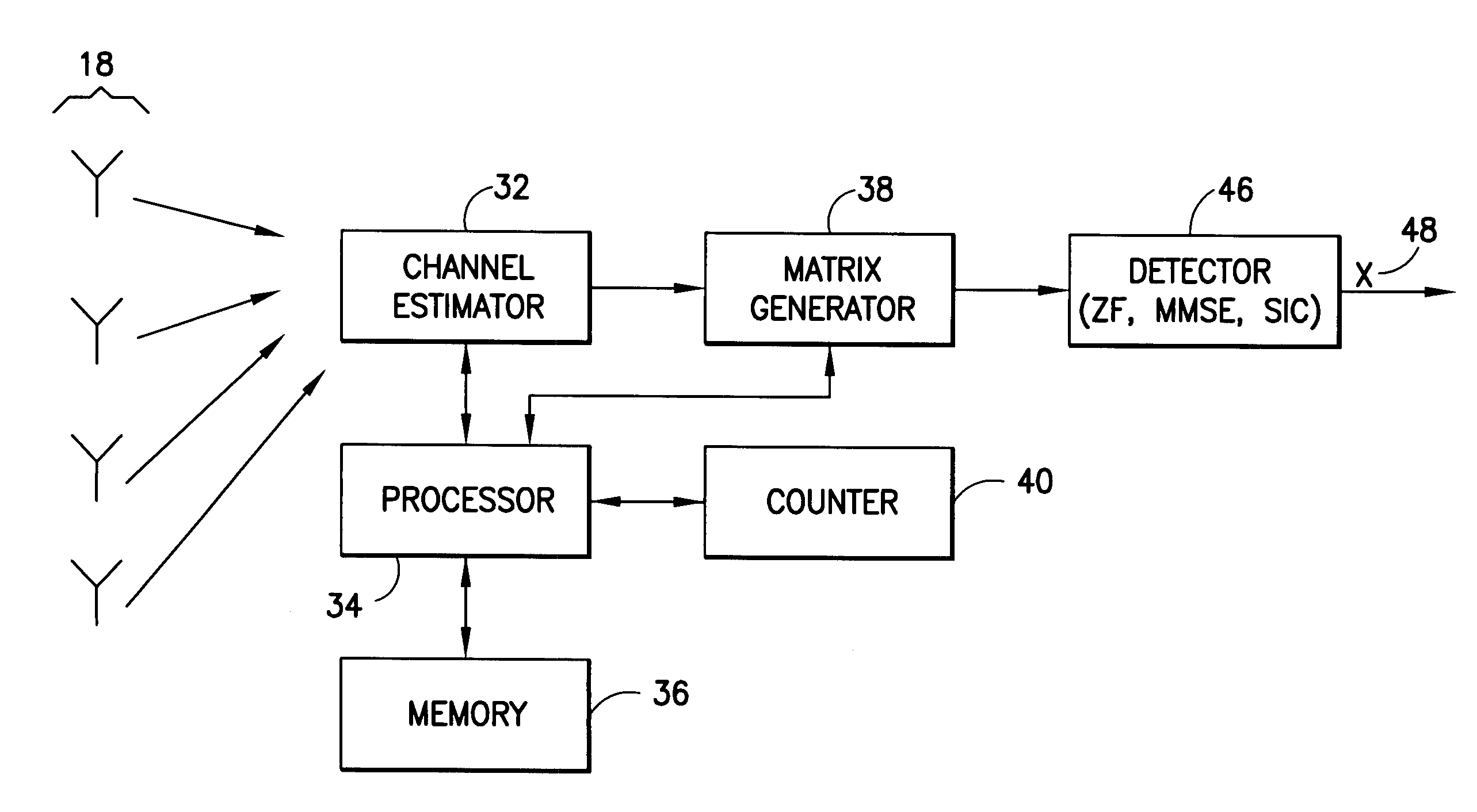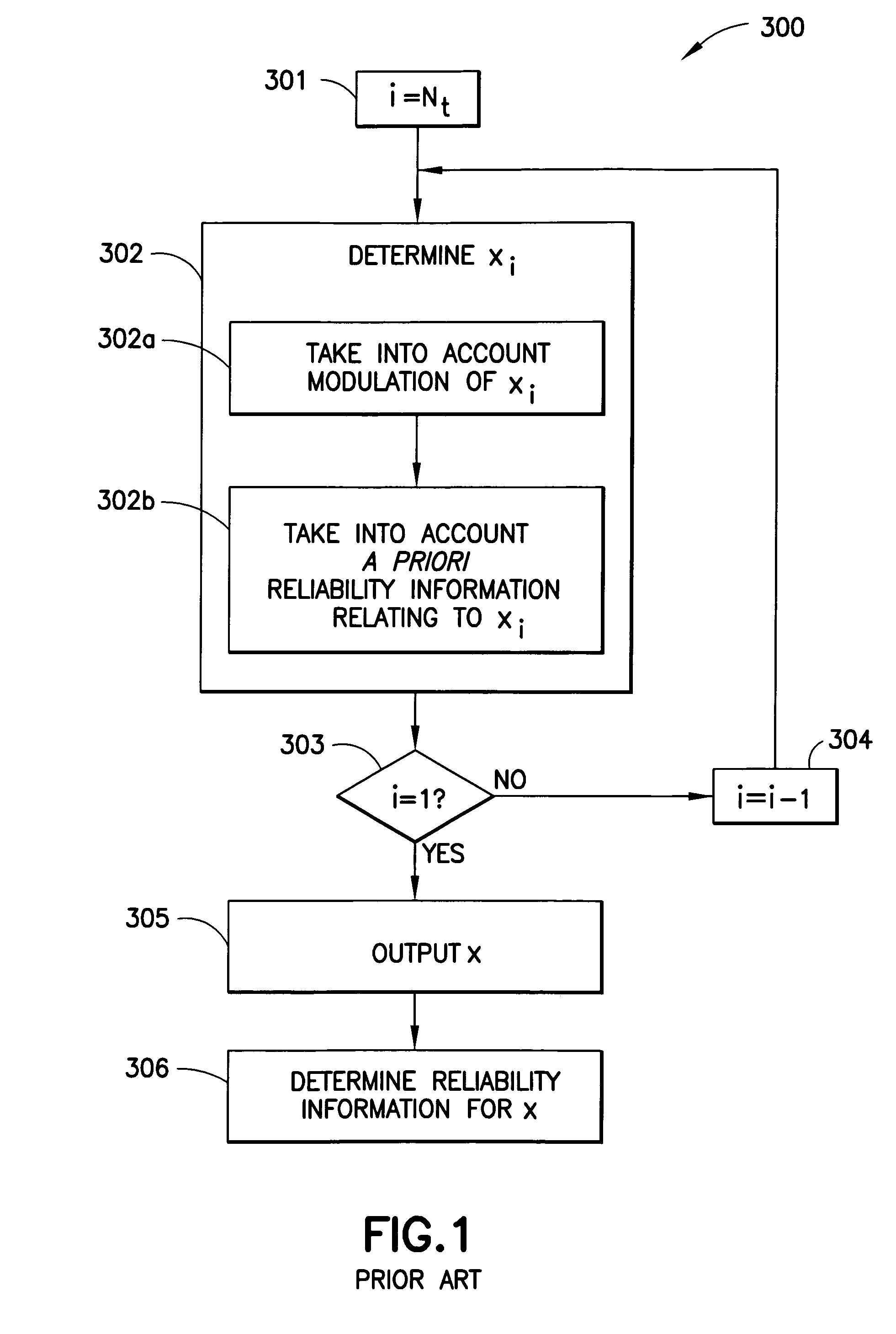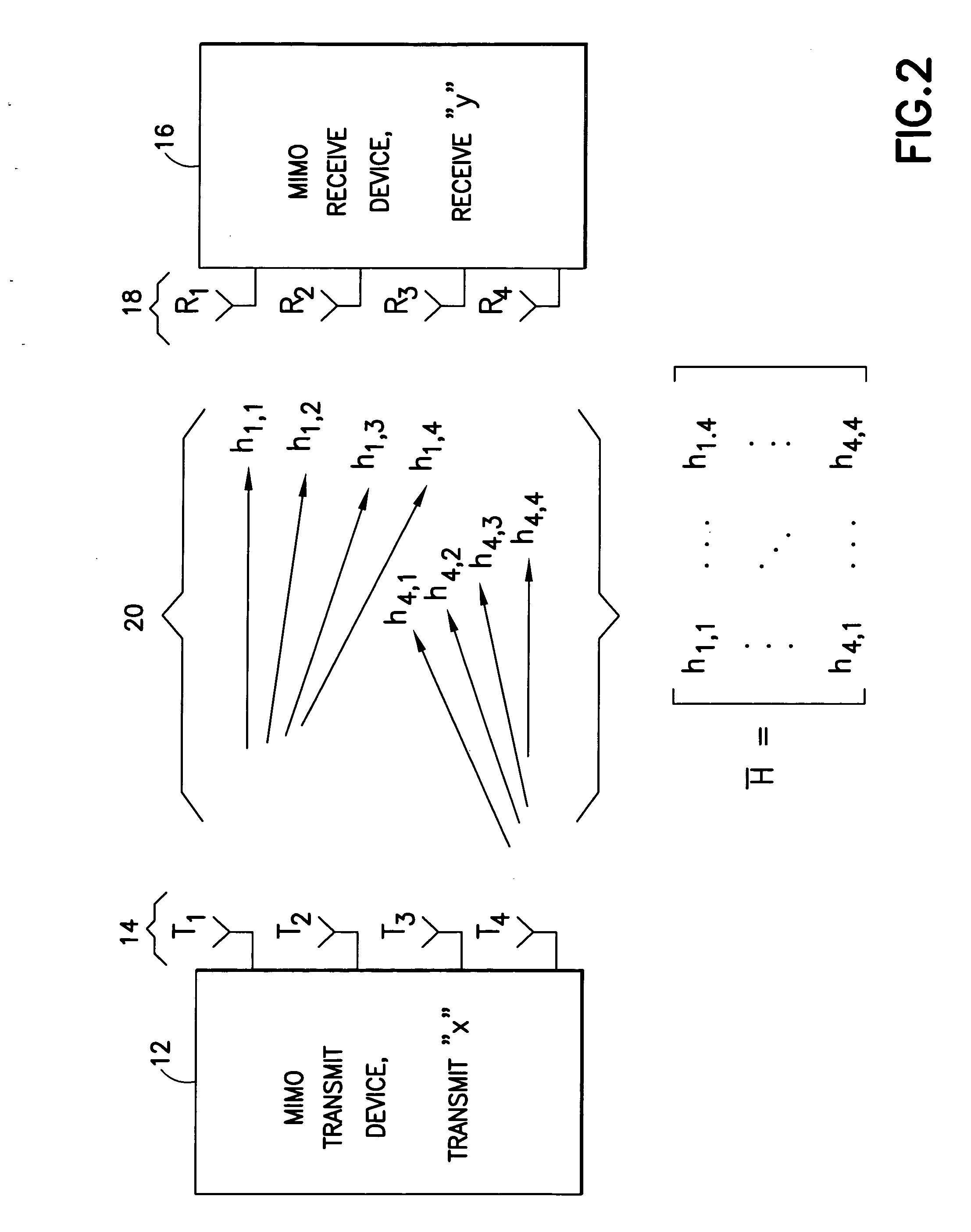Lower complexity computation of lattice reduction
a lattice reduction and low-complex technology, applied in the field of signal detection in a wireless system, can solve the problems of complex and powerful software tools available, and achieve the effect of simplifying detection
- Summary
- Abstract
- Description
- Claims
- Application Information
AI Technical Summary
Benefits of technology
Problems solved by technology
Method used
Image
Examples
Embodiment Construction
[0023]A generalized MIMO communication system 10 is shown in a simplified schematic form in FIG. 2, where a transmit device 12 such as a base transceiver station of a mobile telephony network transmits a symbol vector x={x0, x1, x2, . . . xi} from each of four transmit antennas 14 (labeled T1 through T4), and a receive device 16 such as a mobile station receives the transmitted symbol vector as y={y0, y1, y2, . . . yi} over the MIMO channel 20. The channel 20 is characterized by the channel matrix H. Each sub-channel from one transmit antenna 14 to one receive antenna 18 is represented as one element ht,r of the channel matrix, with subscripts indicating the path from transmit to receive antenna, so that for the four transmit antennas 14 and four receive antennas 18 illustrated in FIG. 2, the channel matrix is
H={h11h12h13h14h21h22h23h24h31h32h33h34h41h42h43h44}.
Note that in FIG. 2, only the sub-channels from transmit antennas 1 and 4 are shown, to avoid clutter. Where multipath effe...
PUM
 Login to View More
Login to View More Abstract
Description
Claims
Application Information
 Login to View More
Login to View More - R&D
- Intellectual Property
- Life Sciences
- Materials
- Tech Scout
- Unparalleled Data Quality
- Higher Quality Content
- 60% Fewer Hallucinations
Browse by: Latest US Patents, China's latest patents, Technical Efficacy Thesaurus, Application Domain, Technology Topic, Popular Technical Reports.
© 2025 PatSnap. All rights reserved.Legal|Privacy policy|Modern Slavery Act Transparency Statement|Sitemap|About US| Contact US: help@patsnap.com



